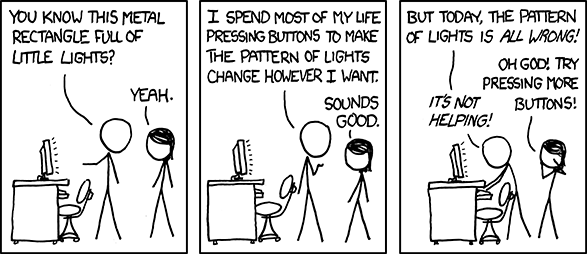

In 2013, I received a Ph.D. in Neuroscince after years of studying electrophysiological properties of cortical neurons. After my graduation, I started working as a post-doc, first in the same lab and then in another university where I used optogenetics and cellular electrophysiology to study cortical circuits.
Before graduate school, I was a Computer Science and Neuroscience double-major as an undergraduate and used C, C++, and Java in my coursework. Throughout the years of my graduate and post-graduate work, I’ve been using Matlab for data analysis. In my lab, we mostly analyzed electrophysiological events, such as action potentials and synaptic potentials and currents. The code I wrote in Matlab used Calculus and statistics to detect the events and analyze their properties (intervent interval/frequency, decay and onset rate, amplitude, etc.). I then did some population statistics (e.g., FI curves on action potentials, ANOVA testing between experimental groups, etc.).
Recently, I decided to switch tracks from academic Neuroscience and move into business/industry-oriented environment where I would apply my analytical skills to solve “real-life” problems. I started exploring data science using Python (and a little R) and, recently, Julia, which seems to show a lot of promise for the future of data science. I am interested in learning how to do analytics and machine learning in these languages.
In this blog, I will attempt to (sparsely) report on my learning process by blogging about some interesting ideas I encounter.
(The image of two neurons was taken from the website of Michael Hausser Lab.)